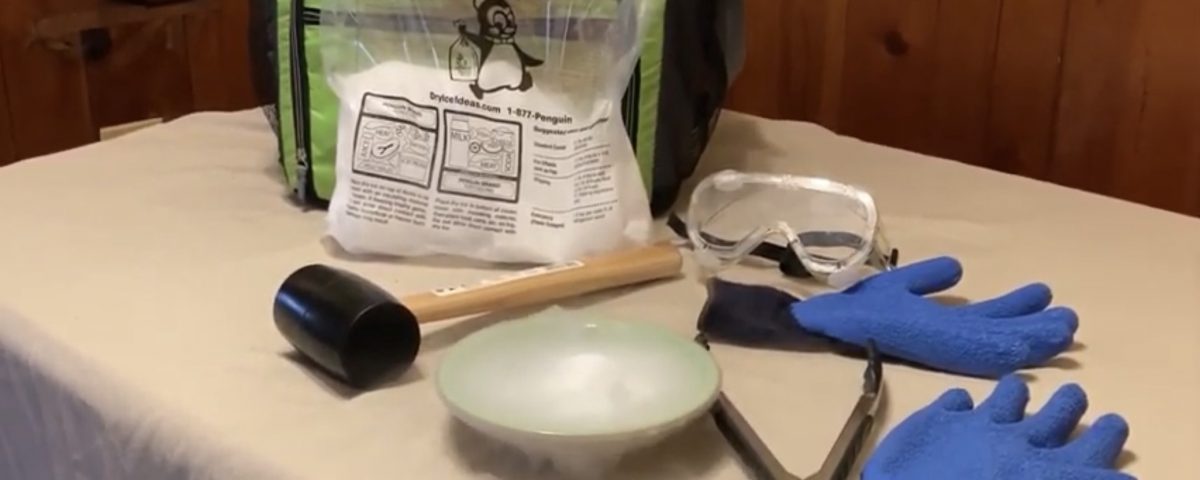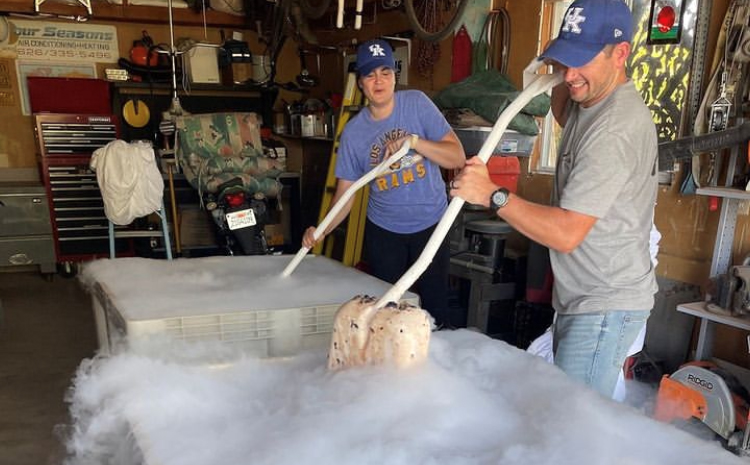Dry Ice Safety: Do’s and Don’ts

Dry ice is solid carbon dioxide and is super cold at -109.3°F or -78.5°C. While this can make dry ice a ton of fun for at-home activities and very useful in science experiments and demonstrations, it also means there are important guidelines to follow when using dry ice so that everyone stays safe. Read our do’s and don’ts of dry ice safety and check out our dry ice safety video below!
Top Five Do’s and Don’ts of Dry Ice Safety:
- Don’t eat or drink dry ice.
- Don’t store dry ice in an airtight container.
- Never touch dry ice directly.
- Only use dry ice under adult supervision.
- Give yourself and dry ice some breathing room.
If you’re heading to the store to pick up dry ice, you’ll need to make sure you have a few things on hand:
- Safety goggles or glasses: While these aren’t necessary to wear when buying dry ice (but feel free!), these are imperative when breaking dry ice into smaller pieces to avoid injury to your eyes.
- Rubber mallet or hammer: A hammer works fine to break dry ice into larger chunks, but you’re less likely to rip the bag if you use a rubber mallet. Wrap the bag in a towel when breaking the dry ice to avoid projectiles if the bag should break.
- Tongs and insulated gloves: Use these tools together to ensure that your hands stay protected when using dry ice!
How to Store Dry Ice
Because dry ice is solid carbon dioxide, an insulated container that isn’t tightly sealed is the best way to store dry ice. A tightly sealed container could cause pressure to build up due to expanding gases as dry ice “melts,” which could lead to a potentially dangerous explosion. Storing dry ice in a container with good ventilation is an easy way to avoid this problem.
Handling Dry Ice
As mentioned earlier, tongs and insulated gloves are key to protecting yourself when directly handling dry ice. If you need to break dry ice into smaller pieces, wear gloves and safety glasses, wrap a piece of dry ice in a towel, and place it on a solid surface. Then use the mallet or hammer to break the dry ice into smaller, more manageable pieces.
Location, Location, Location
When experimenting or playing around with dry ice, work outside or in a well-ventilated area. If you are inside, we recommend turning on fans and opening windows if possible. Remember, dry ice is carbon dioxide in its solid state. As it “melts,” the carbon dioxide turns into a gas and can be dangerous if your space is not well ventilated.
Dry Ice and Food
Dry ice isn’t safe to consume. Eating or drinking anything with dry ice in it or made with dry ice can cause significant damage to your mouth or throat. In addition, the expanding gas from dry ice can also cause significant internal damage.
Dry Ice and Kids
Because dry ice can be dangerous, it should only be used under responsible adult supervision. While dry ice can be used in a variety of fun, educational experiences, closely monitoring everyone handling dry ice is the key to ensuring dry ice safety.
Disposing of Dry Ice
When your experiment or activity is completed, it’s important to remember to allow dry ice to sublimate – or turn to gas – in an open, well-ventilated area. It’s important to remember that the volume of dry ice increases as it sublimates. In an area that isn’t well ventilated, this can increase pressure and cause an explosion. This means you should never put dry ice down the drain or into a trash shoot. If possible, let dry ice sublimate outside.
Instagram: @penguindryice
Facebook: @dryiceideas
Pinterest: Penguin Brand Dry Ice®
Twitter: @PenguinDryIce

